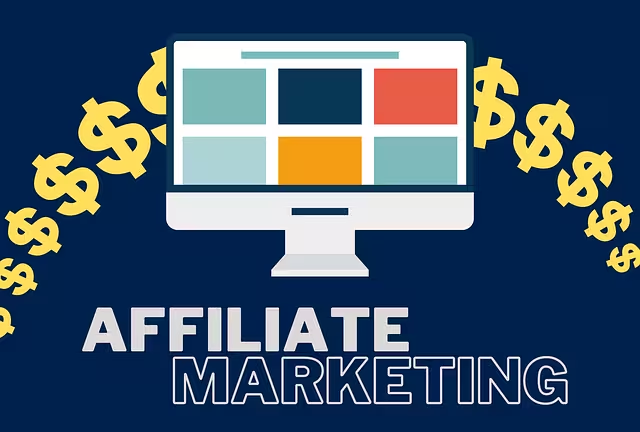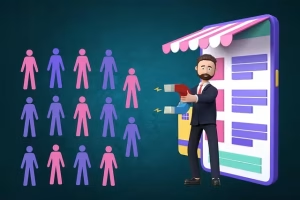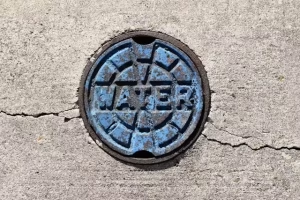In the current digital economy, the pursuit of financial independence often leads individuals toward various online business models. Among them, affiliate marketing is frequently mentioned, though often shrouded in misconception. It has become evident that the narrative of effortless, overnight wealth is a counterproductive fantasy. The reality is that affiliate marketing, at its core, is a disciplined, performance-based business model that takes a lot of work. It operates not on luck, but on a strategic plan of value creation and trust.
This guide is designed to serve as your manual, an actionable blueprint for building a durable and profitable online enterprise. As we navigate 2025, the landscape has evolved. Success is no longer determined by simply placing links, but by establishing genuine authority, earning audience trust, and intelligently integrating new technologies like artificial intelligence to operate more effectively.
The Foundational Principles of Affiliate Marketing
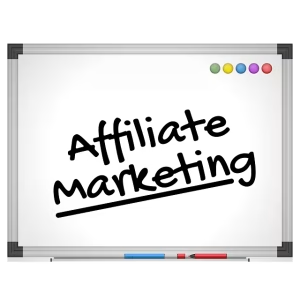
Before you can build a house, you must understand the materials and the design. The same is true for a business. This section will break down the core components of affiliate marketing so you have a solid foundation to build upon.
What is Affiliate Marketing? A Breakdown of the Ecosystem
Imagine you love a specific brand of running shoes. You tell your friend about them, your friend buys a pair using your special recommendation code, and the shoe company pays you a small “thank you” fee (a commission). That’s affiliate marketing in a nutshell.
On the internet, it’s the same idea, just more organized. You, as the affiliate, partner with a company, the merchant, to promote their products or services. You are given a unique tracking link. When someone clicks your link and makes a purchase, you earn a commission.
There are four key players in this system:
- The Merchant (or Brand): This is the company that creates and sells the product. It could be a giant corporation like Amazon or a small business selling handmade goods on a WooCommerce store. They want to sell more products and are willing to pay people to help them.
- The Affiliate (You): This is the publisher or content creator who promotes the merchant’s products. You could have a blog, a YouTube channel, a TikTok account, or an email newsletter. Your job is to connect the right audience with the right product.
- The Consumer: This is the person browsing the internet who you are trying to reach. They are looking for a solution to a problem or information about a product. They click your affiliate link and, if they buy something, complete the cycle. Importantly, the price is the same for them whether they use your link or not; the commission is paid by the merchant.
- The Affiliate Network (The Middleman): Often, a network acts as an intermediary between the merchant and the affiliate. Networks like CJ Affiliate or ShareASale host thousands of affiliate programs in one place. They handle the tracking, reporting, and payments, making the entire process much simpler and more trustworthy.
There are also a few different ways you can get paid, which are called commission models:
- Pay-Per-Sale (PPS): This is the most common model. You get paid a percentage of the sale price only when a consumer buys a product through your link.
- Pay-Per-Lead (PPL): You get paid when a consumer completes a specific action, like signing up for a free trial or filling out a contact form. They don’t have to buy anything.
- Pay-Per-Click (PPC): This is less common now, but some programs pay you a small amount for every person who simply clicks on your affiliate link, regardless of whether they buy anything.
Why This Model is Financially Disciplined and Scalable
Many people are drawn to affiliate marketing for a good reason: it’s one of the most financially sound ways to start an online business.
First, the startup costs are extremely low. Compare it to opening a physical retail store. You would need to rent a building, buy thousands of dollars in inventory, hire employees, and pay for utilities. With affiliate marketing, you don’t handle any inventory. You don’t manage shipping or customer service. Your primary investment is in creating a platform, like a simple website, which can cost less than a hundred dollars a year. This low financial risk makes it an accessible entry point for almost anyone. However, where you do not spend the money, depending on your niche, you spend a lot time investment.
Second, it has the potential for passive income. This doesn’t mean you do nothing and money appears. It means that the work you do today can continue to earn you money weeks, months, or even years from now. For example, if you write an excellent, helpful article reviewing the “Top 5 Coffee Makers for Small Kitchens,” that single article can be discovered by people on Google every single day. As long as that article remains relevant and helpful, it can generate commissions for you while you sleep or while you are working on your next piece of content. You build an asset once, and it continues to provide a return on your investment of time.
Finally, the model is incredibly scalable. A single person can run a very profitable affiliate business. You can promote products to an audience of hundreds, thousands, or even millions without your costs increasing significantly. Your website can handle ten visitors or ten thousand visitors. As you grow, you can partner with more brands, enter new niches, or hire others to help you create content, allowing your business to expand based on its success.
The Strategic Blueprint: Your First 90 Days
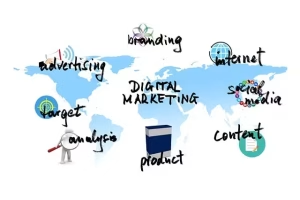
Success in affiliate marketing is the result of a deliberate, step-by-step process. Rushing in without a plan is the fastest way to fail. Think of the next 90 days as the time to lay the foundation for a business that can last for years. Just note, that for some more competitive niches or unknown niches, it can take much longer, sometimes more than a year of effort to get noticed.
Step 1: Niche Selection – The Cornerstone of Success
This is the most critical decision you will make. A “niche” is simply a focused topic or area of interest. Instead of creating a website about “Sports,” you would create a website about “Training for Your First Marathon.” Instead of “Food,” you would focus on “Baking Sourdough Bread at Home.”
Why is this so important? Because the internet is vast and competitive. You cannot be everything to everyone. By focusing on a specific niche, you can become a trusted expert for a dedicated audience.
Here are the criteria for choosing a profitable niche:
- Audience Demand: Are there enough people searching for information and products related to this topic? You can use free tools like the Google Keyword Planner to see how many people search for certain terms each month. If very few people are interested, it will be hard to make money.
- Your Genuine Interest or Expertise: You will be creating a lot of content about this topic. If you don’t find it interesting, you will burn out. If you have some knowledge or are excited to learn, your passion will come through in your content, and your audience will trust you more.
- Product Availability: Are there products you can promote in this niche? A quick search on Amazon or on affiliate networks like ShareASale will show you if there are quality products with affiliate programs. No products means no way to earn commissions.
Let’s walk through an example. Say you love hiking. That’s a bit broad. Let’s narrow it down to the niche of “Day Hiking Gear for Beginners.” It’s specific. People searching for this have a problem: they need to know what gear to buy. You can check Amazon and see thousands of products like backpacks, hiking boots, and water filters. You can use a keyword tool to see that terms like “best beginner hiking boots” get thousands of searches per month. This is a solid niche.
Step 2: Researching and Selecting Affiliate Programs
Once you have your niche, you need to find companies to partner with. There are two main ways to do this:
- Affiliate Networks: As mentioned, these are large marketplaces that house thousands of programs. They are great for beginners because you can sign up once and then apply to many different brands from one central dashboard.
- Amazon Associates: This is the most popular program for beginners. Amazon sells almost everything, so it fits nearly any niche. The commissions are relatively low, but people trust Amazon and tend to buy multiple items at once, and you get a commission on everything in their cart, not just the product you recommended.
- ShareASale and CJ Affiliate: These networks feature thousands of brands, from well-known companies to smaller online stores. They often offer higher commission rates than Amazon.
- ClickBank: This network focuses on digital products, like online courses and e-books. Commissions can be very high, sometimes over 50%, but the products can be of varying quality, so you need to research them carefully.
- In-House Programs: Many companies run their own affiliate programs directly from their website. You can often find them by searching for “[Company Name] + affiliate program” in Google. This can be a great option for promoting a brand you truly love and can often lead to a closer relationship with the company.
When you evaluate a program, look at these four things:
- Commission Rate: What percentage of the sale will you earn?
- Cookie Duration: A “cookie” is a small file that tracks that a user came from your link. The duration is how long that cookie lasts. If the cookie duration is 30 days, you will earn a commission if the user buys anything from that site within 30 days of their first click. Longer is better.
- Brand Reputation: Only promote products and companies you trust. Your reputation is your most valuable asset. Promoting a bad product will destroy the trust you have with your audience.
- Affiliate Support: Does the company provide you with tools, banners, or a contact person to help you succeed? Good programs see their affiliates as true partners.
Step 3: Building Your Platform – Your Digital Real Estate
Your platform is where your content lives. It’s the place you send your audience to learn, engage, and ultimately click your affiliate links. While you can do affiliate marketing without a website, owning your platform is the most secure, long-term strategy.
- Niche Website/Blog (Highly Recommended): This is the gold standard. A website built on a platform like WordPress gives you complete control. You own it. No algorithm change can take it away from you. You can design it how you want, optimize it for Google (SEO), and build it into a valuable asset. For those looking to the future, a WordPress site with WooCommerce can even allow you to sell your own products alongside your affiliate promotions. This is the path for building a real, sustainable business. Note, WooCommerce is one of the few e-commerce programs to have affiliate links out of the box.
- YouTube Channel: Video is incredibly powerful for demonstrating products. If your niche is visual (like cooking, electronics, or fitness), a YouTube channel can be an excellent platform. You can place affiliate links in your video descriptions. The downside is that you are building on rented land—YouTube controls your channel and can change its rules at any time.
- Social Media (Instagram, TikTok, Pinterest): These platforms are great for reaching large audiences quickly, especially in visual niches like fashion or home decor. However, they are fleeting. A post is popular today and gone tomorrow. It’s very difficult to build a lasting library of content, and like YouTube, you are at the mercy of the platform’s algorithm. A smart strategy is to use social media to drive traffic to your website, where you have more control.
Content Creation: The Engine of Your Enterprise

Your platform is the vehicle, but content is the fuel that makes it go. Without high-quality, helpful content, you have nothing to offer your audience. Your goal is not to sell; it’s to help. When you help people solve their problems, the sales will follow naturally.
The Psychology of High-Converting Affiliate Content
People don’t go online to be sold to; they go online to find answers. The best affiliate content feels less like an advertisement and more like advice from a knowledgeable friend.
Here are the most effective types of content:
- In-Depth Product Reviews: Go beyond the product description. Buy the product yourself if you can. Use it. Take pictures and videos. Talk about who it’s for, who it’s not for, its best features, and its flaws. Honesty builds trust. A review that points out a small flaw is often more believable than one that is 100% positive.
- “Best Of” Listicles: These are articles like “The 5 Best Running Shoes for Flat Feet” or “10 Must-Have Tools for a Home Gardener.” You research and compare multiple products, saving your reader hours of work. You become a trusted curator.
- Product Comparisons (X vs. Y): When people are close to buying, they often narrow their choice down to two options. An article that directly compares “Product X vs. Product Y” on features, price, and performance is incredibly valuable and can lead to high conversion rates.
- Tutorials and “How-To” Guides: Show people how to use a product or achieve a result. For example, “How to Set Up Your New DSLR Camera” could include affiliate links to the camera itself, lenses, memory cards, and a camera bag. You are providing immense value, and the product recommendations are a natural part of the process.
SEO Best Practices and E-E-A-T
SEO, or Search Engine Optimization, is the art and science of getting your content to show up on the first page of Google when people search for your topic. Google’s main goal is to provide its users with the best possible answer to their questions. To do this, it looks for content that demonstrates E-E-A-T:
- Experience: Have you actually used the product or done the thing you’re writing about?
- Expertise: Do you have knowledge and skill in this area?
- Authoritativeness: Are you seen as a go-to source for this topic?
- Trustworthiness: Are you honest and transparent?
This is why just copying a product description isn’t enough. You need to create original, helpful content that proves you are a reliable source. A key part of Trustworthiness is affiliate disclosure. The law (specifically, the FTC in the United States) requires you to clearly state that you may earn a commission from the links on your page. This is usually done with a simple sentence at the top of your article, like: “This post may contain affiliate links. If you buy something through these links, I may earn a small commission at no extra cost to you.” Being upfront builds trust.
The Rise of AI in Content Strategy
Artificial Intelligence (AI) tools like ChatGPT, Jasper, and Copy.ai have changed the game for content creation. They can be incredibly powerful assistants, but they are not a replacement for human experience. Using AI to simply write an entire article is a poor strategy because it lacks the “E” for Experience in E-E-A-T.
Here is how to use AI intelligently:
- Brainstorming: Ask AI for a list of 20 article ideas for your niche.
- Outlining: Give AI a topic and ask it to create a detailed outline for an article. This can save you a lot of time.
- Drafting: Use AI to write a rough first draft of a section. Then, it’s your job to go in, rewrite it in your own voice, add your personal experiences and opinions, check every fact, and ensure it is truly helpful.
Think of AI as a junior assistant, not the final author. It handles the busywork, freeing you up to focus on adding the human element that builds trust and authority.
Driving & Converting Traffic: From Visitor to Customer

You can have the best content in the world, but if no one sees it, it doesn’t matter. Driving traffic—getting people to visit your platform—is the next critical step. Remember where I said it could time, this where the time comes in. It can take time for your posts to rank and get noticed, especially if your website is new.
Organic Traffic Generation via Search Engine Optimization (SEO)
Organic traffic is free traffic that comes from search engines like Google. This is the most valuable and sustainable type of traffic. It involves two main parts:
- On-Page SEO: This is everything you do on your website. It includes putting your main keyword in your article title, using clear headings (like the ones in this article), writing a good meta description (the little blurb that shows up in Google search results), and making sure your site loads quickly.
- Off-Page SEO: This mostly refers to getting other reputable websites to link to your content. These are called “backlinks.” When another site links to you, it’s like a vote of confidence in Google’s eyes, telling the search engine that your content is valuable. This happens naturally when you create truly excellent, shareable content.
Diversifying Traffic Streams
Relying 100% on Google is risky. A single algorithm update can hurt your traffic overnight. Smart affiliates build traffic from multiple sources.
- Building an Email List: This is the most important asset you can build. Offer your visitors something valuable for free—like a checklist, an e-book, or a short email course—in exchange for their email address. Once you have their email, you can communicate with them directly. You can let them know when you publish a new article or have a special promotion. You own your email list. No algorithm can take it away from you.
- Paid Advertising (PPC): Platforms like Google Ads and Facebook Ads allow you to pay to put your content in front of a targeted audience. This can get you traffic very quickly, but it’s a high-risk strategy for beginners. You can easily lose money if you don’t know what you’re doing. It’s best to focus on free traffic first and explore paid ads only after you have a profitable and well-converting website.
Conversion Rate Optimization (CRO)
Getting traffic is only half the battle. You also need to “convert” that traffic, meaning you need visitors to take the desired action (clicking your affiliate link). CRO is the process of improving your website to increase the percentage of visitors who convert.
This can be as simple as:
- Placing your links where people are most likely to see them.
- Using clear, compelling call-to-action (CTA) buttons instead of just text links. For example, a button that says “Check Price on Amazon” is more effective than a simple link.
- Making sure your website is easy to read and navigate on a mobile phone, as that’s where most people browse the internet today.
Frequently Asked Questions (FAQ)
When starting, many people have the same questions. Let’s address them directly with realistic, no-hype answers.
How much can a beginner realistically make with affiliate marketing?
This is the most common question, and the honest answer is: it varies wildly, but it starts slow.
- Months 1-3: Expect to make little to nothing. $0 – $50 is a realistic outcome. This period is for building your platform, learning, and publishing your first 10-20 pieces of content. You are laying the groundwork. Again, this time period could be longer.
- Months 4-6: If you are consistent, your content may start to rank in Google, and you could begin to see a trickle of traffic and sales. Earning $100 – $500 per month is a great goal for this phase.
- Months 7-12: As your site gains authority and you continue to publish high-quality content, your traffic and income should grow steadily. Reaching $1,000 per month or more within the first year is an achievable goal for those who are dedicated and follow a solid strategy.
Anyone promising you thousands of dollars in your first month is not being truthful. This is a real business, and it takes time to grow.
Is affiliate marketing still profitable in 2025?
Yes, absolutely. It is more profitable than ever before, but it is also more competitive. The days of creating a cheap, low-quality website and succeeding are over. In 2025, success requires you to act like a real media company. You must focus on a specific niche, build a strong brand, create content that is genuinely the best on the internet for your topic, and build a relationship with your audience across multiple channels. It’s harder, but the potential rewards are also greater.
How can I start affiliate marketing with no money?
While investing a small amount in a domain name and web hosting (around $100/year) is highly recommended for building a long-term asset, you can start with zero financial investment.
You can create content on free platforms like a YouTube channel, a TikTok account, or a free blog on a site like Medium. You can then join affiliate programs like Amazon Associates (which is free) and place your links in your content.
The downside is that you have no control over these platforms, and it can be harder to build authority and rank in Google. This “no money” approach is a good way to test your niche and learn the ropes, but the goal should be to reinvest your first earnings into building your own website, which is a real business asset that you control.
Conclusion: Your Path Forward to a Profitable Affiliate Business
We have moved beyond the basic definition of affiliate marketing and have constructed a clear, strategic blueprint for building a business. The path to success is not complex, but it does require discipline and consistency.
It all boils down to four pillars:
- Niche: Choose a focused topic you can become a trusted expert in.
- Platform: Build your digital real estate, preferably a website you own and control.
- Content: Create genuinely helpful content that solves your audience’s problems.
- Traffic: Learn the basics of SEO to attract visitors from Google and build an email list to create a direct line of communication with your audience.
Remember that this is a marathon, not a sprint. The results you see in month six are the product of the work you do in month one. By focusing on providing real value and building trust, you can create a scalable, financially disciplined, and ultimately rewarding online business. Your next step is simple: choose your niche, register your domain, and write your first article. The journey begins with that single, decisive action.


